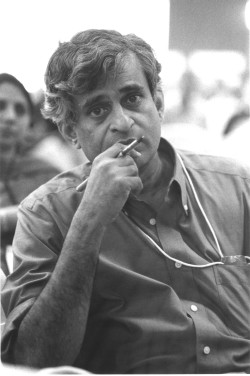
De Burgo’s, Augustine Street, has always had an intimate relationship with the local music scene in Galway and many people can recall spending at least one good night in the underground venue (and if you cant your missing out). I remember it was there I first heard Drum and Bass being played outside of my own bedroom at a packed, sweaty party years ago. Club nights like Gigantic and Spacedog that began in De Burgo’s brought much needed good quality tunes to an audience who wanted more than just an average night out at a mediocre nightclub. These days Stress!! is the name of the most exciting and different musical event in Galway. Stress!! is a weekly night of electronic, acoustic, experimental and improvised music that takes place every Wednesday in De Burgos. While it was originally founded by Liam Hough, Tony Higgins and Jonny White, it is maintained and supported by many friends and like minded music fans.
The lack of opportunities for local bands trying to break out of the mainstream was a driving force behind the creation of Stress!! “There wasn’t many bars putting on original music” explains Jonny “and there’s a lot of people out there who are really good, but its not exactly what these bars put on. All of them deserve a place to play”. So, after getting a 5 week trial, the group set about booking the venue with artists they liked and filling it with an audience; an aim they have achieved.Improvisation and collaboration is central to the ethos behind Stress!! “When we started off, jamming was the main part of the night. Everyone who was playing, all the band and just whoever wanted to play could go nuts. Sometimes it was class, sometimes it sounded like you were getting sick!”
It is this sense of freedom and audience involvement which makes Stress!! such a unique night. Often musicians will perform close to the audience on the dance-floor, mingling with the crowd, narrowing the gap between performer and viewer.Abandoning the mainstream and more typical forms of musical expression is also important to Stress!! “99% of music on the radio is bollocks, it’s terrible,” says Jonny, “It’s made for money and there’s nothing really good about it. Most of the music I listen to, most people haven’t heard of. It’s not a snobbish thing, you just find what you’re into and then you keep digging.” Many of the bands and artists who play Stress!! share this belief, and their own inventive ways of making music has led to some interesting and memorable nights.
Kerry born turntable legend DJ Deviant has played some epic gigs at Stress!!, with lyrics occasionally provided by the talented Sebi C and Hideous Penguin. DJ Deviant’s unique approach to scratching and use of many styles has earned him a large following around Galway and his live performances never disappoint. At Stress!! he utilised multiple sets of decks and incorporated a full band into the mix, making for an amazing musical spectacle. The low ceilinged venue and willingness of the crowd to dance along gave the set a real house party atmosphere. Deviant returns to Stress!! on the 14th of November, a gig to be missed at your peril.
The venue is also perfect for quieter, more ambient performers, given its intimate setting. This makes it ideal for artists such as Laura Sheeran who also played there recently. Mixing folk and electronica in innovative ways she creates atmospheric songs, driven by her heart-stirring voice. At Stress!!, Laura’s songs were careful mixtures of looped vocals and various instruments in front of electronic beats and the results were mesmerising.
Artists who perform at Stress!! are always very appreciative of the opportunity to present their material to an audience. Events like Stress!! which showcases new and often unusual talent are important if a vibrant music scene is to exist. Bar one or two other places in Galway, it is difficult to come across music which excites or crosses boundaries. In a town so renowned for embracing the Arts it is disheartening to see pubs and clubs dominated by cover bands and DJs playing chart music, especially when there are so many bands creating progressive music.
Myspace is a vital resource to the organisers of Stress!!, allowing them to book bands and exchange ideas with people running similar nights. “There’s a whole bunch of nights like Stress!! around the country,” says Jonny, “they just don’t get the press, they’re booking brilliant bands.” “What’s made it easier for us is that we’ve hooked up with guys around the country,” adds Tony, “There’ a network now. Cork, Tralee, Belfast, Dublin, Limerick”. The Stress!! Myspace page is also a useful resource for people looking for new bands to discover as there is information and links to all the bands who have played at Stress!!, and the list is quite long.
Local instrumental rockers Junk Turks play on the 7th of November. Previously described as “the offspring of the White Stripes and Rodrigo y Gabriela” they blend ethnic tomes with intricate and crazy guitaring. With them on the night will will be Dublin singer and electronic explorer Ewa Gigon and Galway singer-songwriter el Scamperino!
On the 14th of November, Deviant is joined by windings (one of the members of giveamanakick) whose melodic rock has seen him share the stage with acts such as Smog, Bob Mould, Okerville River and FlyPanAm.
The best thing about Stress!! is that no two weeks are the same. The bands and styles of music change but the quality never ceases, and at this stage it has become a shelter for those looking for good music. “It’s just music that if you heard anywhere you’d think ‘that’s interesting, I’m glad I came’ Tony says. “It just happens that it’s once a week in Galway”. Long Live Stress!!





